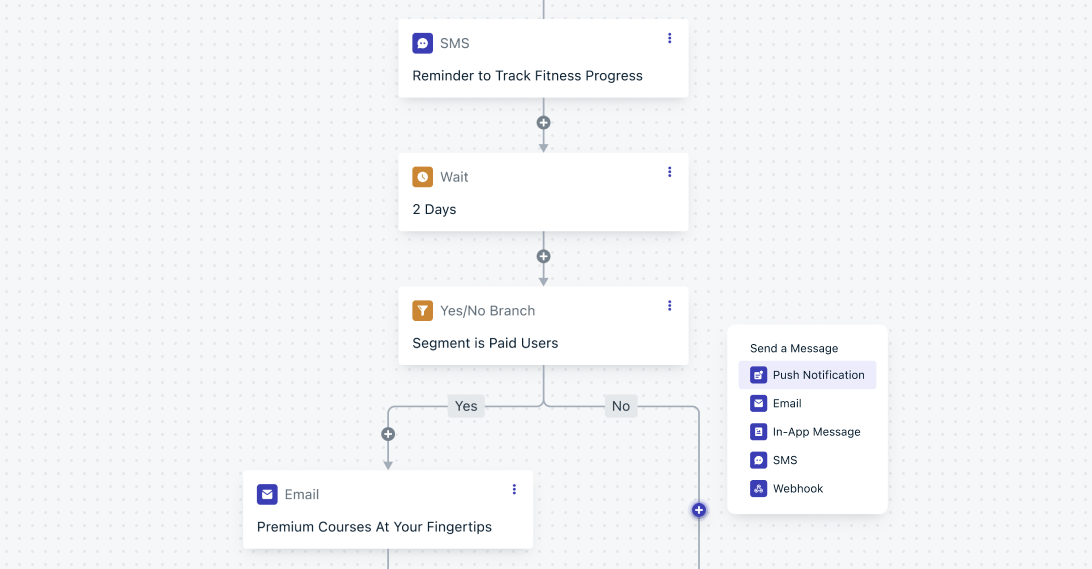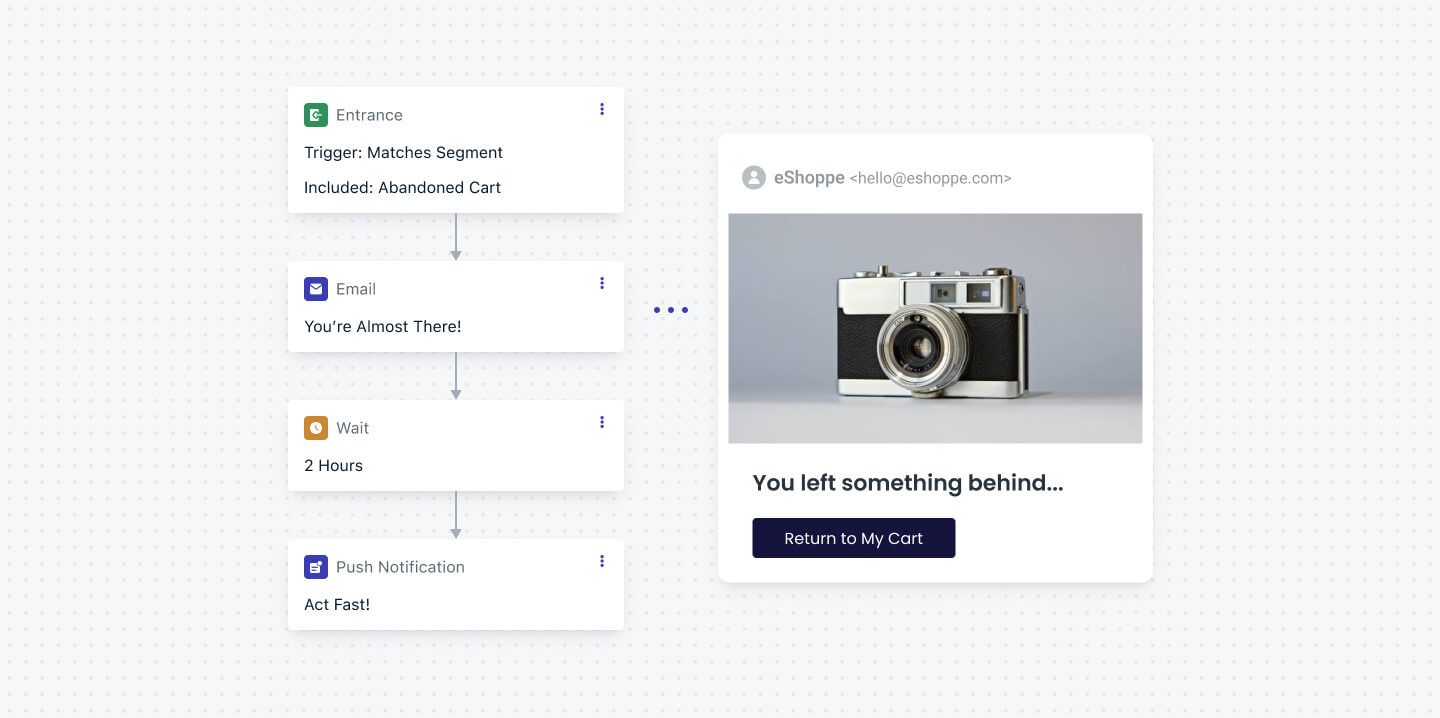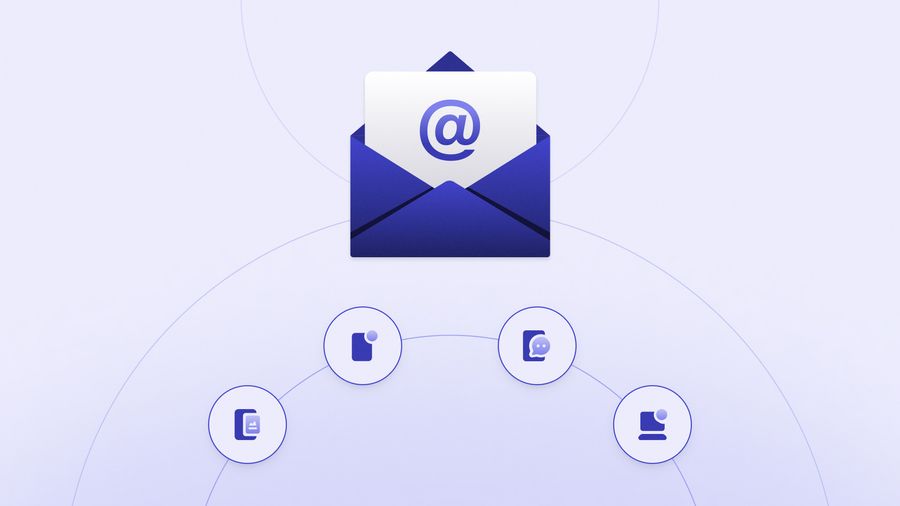Marketing is no longer a collection of isolated, digital islands surrounding one-off customers. In 2024, it has evolved into a single marketing mainland, offering a unified digital experience to long-term users.
The shift is driven by the growing expectations of consumers who demand a seamless, personalized, and consistent experience across all touchpoints with a brand. Instead of approaching marketing in silos, businesses are recognizing the need to break down these barriers and create an integrated ecosystem. While email marketing is considered “traditional” by way of age, we’re here to remind you just how much your ROI relies on this tried and true messaging channel.
The Silo Effect and its Consequences
The "silo effect" in marketing refers to a situation in which different departments or teams within a company operate in isolation, with limited communication and collaboration with each other. Sound familiar? If you’ve ever been part of a marketing team that operates this way, you know exactly how wasteful and inefficient it is. A lack of coordination and synergy among different marketing functions results in missed opportunities and a fragmented customer experience.
Keeping email marketing separate from other marketing channels can have several consequences, many of which make it more difficult to understand your audience and, by extension, more difficult to retain users.
Let’s take a look at how to combat each of these consequences by bringing a thoughtful email strategy into the fold for your 2024 mobile marketing efforts.
1. A Fragmented Customer Experience
A disjointed approach leads to a customer experience that feels disconnected and irrelevant. At a high level, a customer who receives an email offer might expect to find more information about it on your website or social media. If these channels are not synchronized, it can lead to frustration and a potential loss of trust.
More specifically, you may have a mobile game with a loyal user base. You regularly send out email updates to inform players about new features and in-game events. If you send an email to your players announcing an exclusive in-game event with the promise of unique rewards. Players open the email and click on a link to participate.
In a scenario where your email marketing is segregated from your in-game notifications or messaging, players might encounter problems. For instance, they click the link expecting to be taken directly to the event within the game but instead are redirected to a generic landing page or a website not optimized for mobile. This disconnect can lead to repeated disappointments and high churn rates.
Read more about avoiding mobile app user churn to learn the art of sustainable user retention!
Solution: Centralize and Automate With Email
Integrate your email marketing provider with your CRM (customer relationship management) system to collect and centralize customer data. Most popular CRM systems and email marketing platforms offer integration options. This enables a unified view of customer behavior and preferences across all channels.

OneSignal offers full email marketing capabilities alongside other channels, allowing you to synchronize your in-app and push messaging strategies with your email campaigns. Worried about a manual and lengthy IP warm-up process? Email migration shouldn't have to be difficult. OneSignal now offers email auto warm-up, designed to take care of the gradual warm-up process with the click of a single button.
Use these partnerships to harness cross-channel optimization with a drag-and-drop email composer designed to maximize conversions.
Connect With an Email Expert to Get Started!
After integration, you’ll want to pay close attention to cross-channel coordination. Align your email marketing campaigns with other marketing efforts. Ensure consistent messaging, timing, and branding across channels to create a seamless customer experience.
For example, if your company is running a week-long social media contest to promote a new product, align your email marketing to support it. Send out an email at the start of the contest to your subscribers, informing them about the contest, its exciting prizes, and how they can participate. During the contest, send reminder emails and push notification updates about the contest's progress, reinforcing the campaign's message. This coordinated approach ensures that your audience receives consistent messaging and a unified experience across both email, push, and social media, encouraging participation and cementing engagement.
Lastly, you’ll want to use email automation to address various customer interactions on multiple channels.
Setting up automated email workflows involves creating sequences of pre-defined email messages that are triggered by specific user actions or behaviors. For instance, when a customer abandons their shopping cart on your website, an automated workflow can send a series of reminder emails over a few days, encouraging them to complete the purchase. With OneSignal Journeys, you can use email alongside push, in-app, and SMS notifications to create a cross-channel “rescue effort” to help high-intent shoppers complete their purchases. Automating cross-channel messages in a single workflow avoids fragmenting the customer experience by communicating with customers as they move across different platforms throughout their week.

These workflows save time and enhance efficiency by delivering relevant content to users based on their actions, nurturing leads, and driving conversions without manual intervention.
Get started learning how to create better cart recovery emails, if you think you’re ready to tackle this!
2. Missed Opportunity for Personalization
Mobile messaging personalization is a key trend in marketing. An isolated email marketing strategy may not leverage insights from other channels to create highly personalized email campaigns tailored to individual customer preferences and behavior.
Disconnected systems often result in incomplete user profiles, making it challenging to gather a comprehensive understanding of a customer's preferences and behavior. This lack of data cohesion leads to inaccurate targeting, causing users to receive irrelevant content and offers. It’s one of the quickest ways to destroy your customer engagement.
Solution: Use Email to Truly Get Personal
To address incomplete user profiles, use email engagement data to fill gaps in user information. Encourage users to update their profiles through email campaigns, offering incentives like exclusive content or discounts in exchange for completing their profiles.
Without integration, it's also difficult to synchronize user interactions across various channels. As a result, marketers miss opportunities to send tailored messages that acknowledge a user's actions on other platforms. For instance, an e-commerce customer who browsed specific products on your website might receive generic emails that don't reflect their interests.
To combat this, send emails that react to users' interactions on other channels. For example, if a user browses products on your website but doesn't make a purchase, use email to follow up with tailored product recommendations or exclusive promotions based on their website activity.
We’ve collected some email segmentation best practices to help you understand just how powerful email can be as a tool to make your users feel heard with relevant information.
A note on user preference centers:
User preference centers allow customers to customize their interactions with your brand by choosing their content preferences and desired communication frequency. Unifying your messaging strategy makes it much easier to manage preference centers because it centralizes customer information, allowing you to ensure that the preferences set in one channel, such as email, are reflected consistently across all other touchpoints. By allowing each individual user to choose their level of engagement with your brand, you effectively streamline the process of delivering tailored content and respect user choices — both of which enhance customer satisfaction and relationship-building.
Our Guide to User Preference Centers has everything you need to know!
At the end of the day, disconnected systems make it nearly impossible to deliver highly personalized and timely content. As a consequence, users often receive generic, one-size-fits-all messages that may not resonate with their unique preferences and behaviors. Email is one of your strongest allies in segmenting your audience based on their interactions and interests, and then delivering personalized email content accordingly.
Remember, relevancy is the backbone of engagement and eventual conversions! To get started creating a user preference center in OneSignal, explore our preference center setup page which includes requirements and implementation instructions.
3. Wasted Resources
Operating email marketing in isolation can lead to duplicated efforts and wasted resources. You might create content and campaigns for email that could have been repurposed or aligned with other marketing initiatives.
Separate systems often lead to redundant content creation efforts. Teams create similar or identical content for different channels, wasting time and resources. Beyond simple redundancy, maintaining separate systems requires ongoing data migration and synchronization efforts. This can be time-consuming, error-prone, and resource-intensive.
Solution: Email Gives You More Bang For Your Buck… Take Advantage!
Email can be used to repurpose campaigns created for other channels, effectively multiplying the mileage of your carefully created content. For instance, blog posts, social media updates, or longer-form eBooks can be shared with email subscribers, reducing duplication of content creation efforts. The cherry on top? Email is a historically cost-effective communication tool.
Email has been proven to return $36 for every $1 spent.
By centralizing customer engagement through email, you can dramatically reduce the costs associated with managing multiple platforms and fragmented systems. It pays to be organized!
Going a step further, you no longer need to spend countless days manually warming up your email campaigns! With OneSignal's auto email warm up feature, switching from a dedicated email provider in 2024 has never been so easy.
Start learning how to automatically warm your email subdomain!
4. Data Blind Spots and Limited Insights
Email is a rich source of data on customer behavior, but without integration, this data may remain separate from the data collected on other channels. You can track the performance of individual links within your emails. For instance, if you have multiple product links in an email, you can see which product received the most clicks, helping you understand what interests your audience.
Keeping your email provider segregated from the rest of your channels often limits the collection and analysis of user behavior data. When email is isolated, it quickly becomes challenging to gather comprehensive insights about how subscribers interact with emails beyond open and click metrics.
Solution: More Synchronization = More Data
Introducing email into the unified marketing ecosystem allows for seamless data integration. By including email, you can track user interactions, open rates, click-through rates, and conversion data in one centralized system, providing a comprehensive view of user behavior.
The integration of email with other channels also facilitates more efficient user tracking. You can follow a user's journey as they move across different touchpoints, enabling you to understand how they engage with your brand at various stages.
Ready to fully dive into what it takes to cater to the mobile user app journey in 2024? We got you covered.
5. Over Messaging
There is nothing worse than being bombarded by a buzzing phone and countless disjointed notifications. In fact, it’s one of the biggest reasons for mobile app user churn.
Segregating messaging channels can lead to accidentally over-messaging users because different teams or departments may not have visibility into the messages sent via other channels. This lack of coordination can result in users receiving multiple, possibly redundant messages, leading to information overload and a poor user experience.
Solution: Same Platform, Same Page
Unifying your channels in one platform makes it easier to have visibility into what other teams are doing and synchronize your efforts to create a better user experience. With centralized oversight, teams can coordinate messaging schedules, content, and user preferences more effectively, ensuring a harmonious and non-intrusive user experience.
By unifying email with push or in-app messaging in a centralized platform, these teams can coordinate their efforts. They could, for example, schedule the push notification to coincide with a flash sale email campaign, creating a more streamlined and coordinated user experience. In this example, users are now informed about the promotion through two different channels, but without causing confusion or frustration due to simultaneous messaging or nonsensical timing!
OneSignal offers Frequency Capping, which allows you to define the maximum number of notifications a given user is permitted to receive in a given time frame.
OneSignal Makes Email Simple… Without Sacrificing Impact
Sending dynamic email campaigns in harmony with the rest of your mobile marketing strategy doesn’t need to be a headache. OneSignal was built as a single, intuitive platform to give you a holistic messaging platform without the overcomplicated and expensive alternatives that have come to bloat the market today. Our segmentation editors, best-in-class automation features, and customizable web prompts help you collect user data and use that data to skyrocket engagement. At the end of the day, we simply believe in messaging that works.
Create a OneSignal Account



